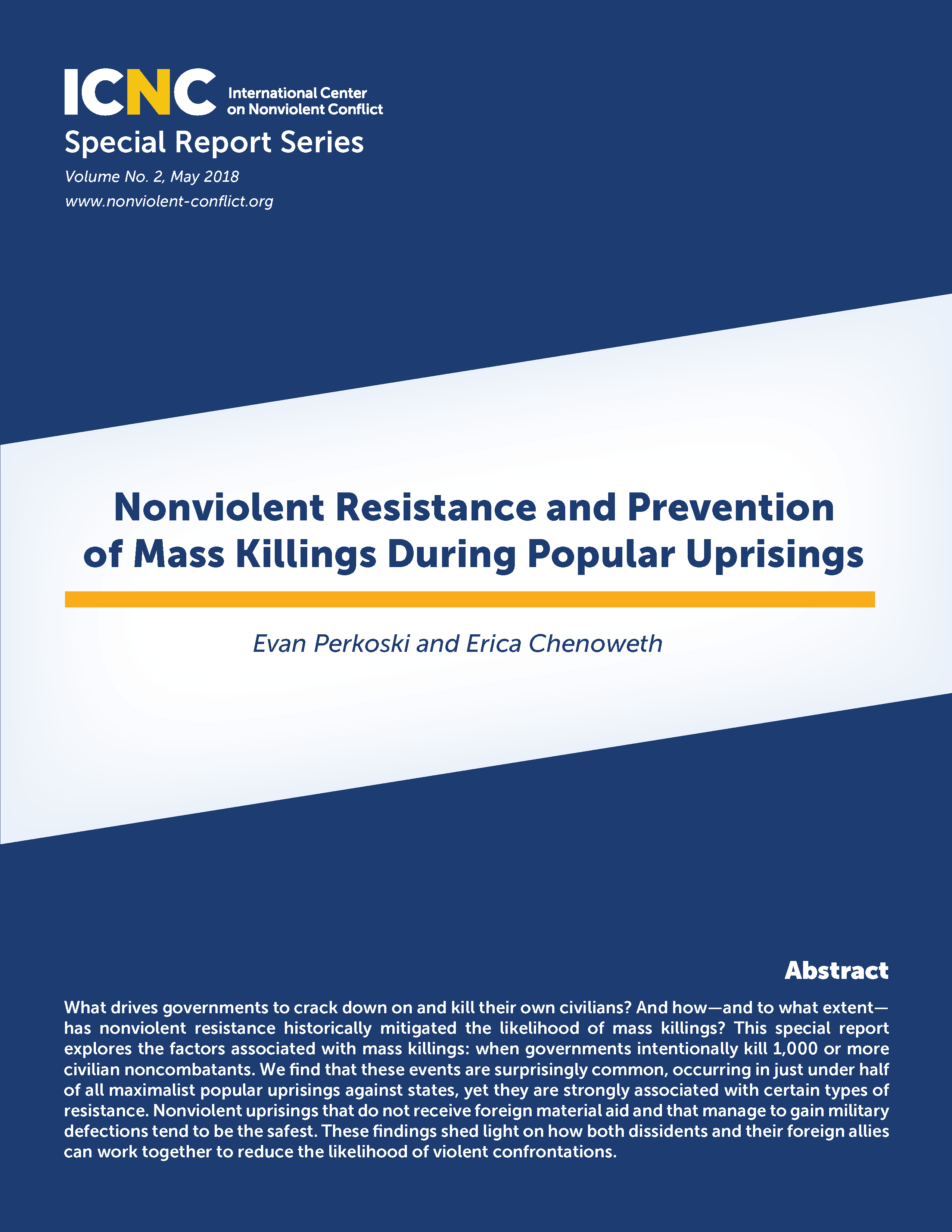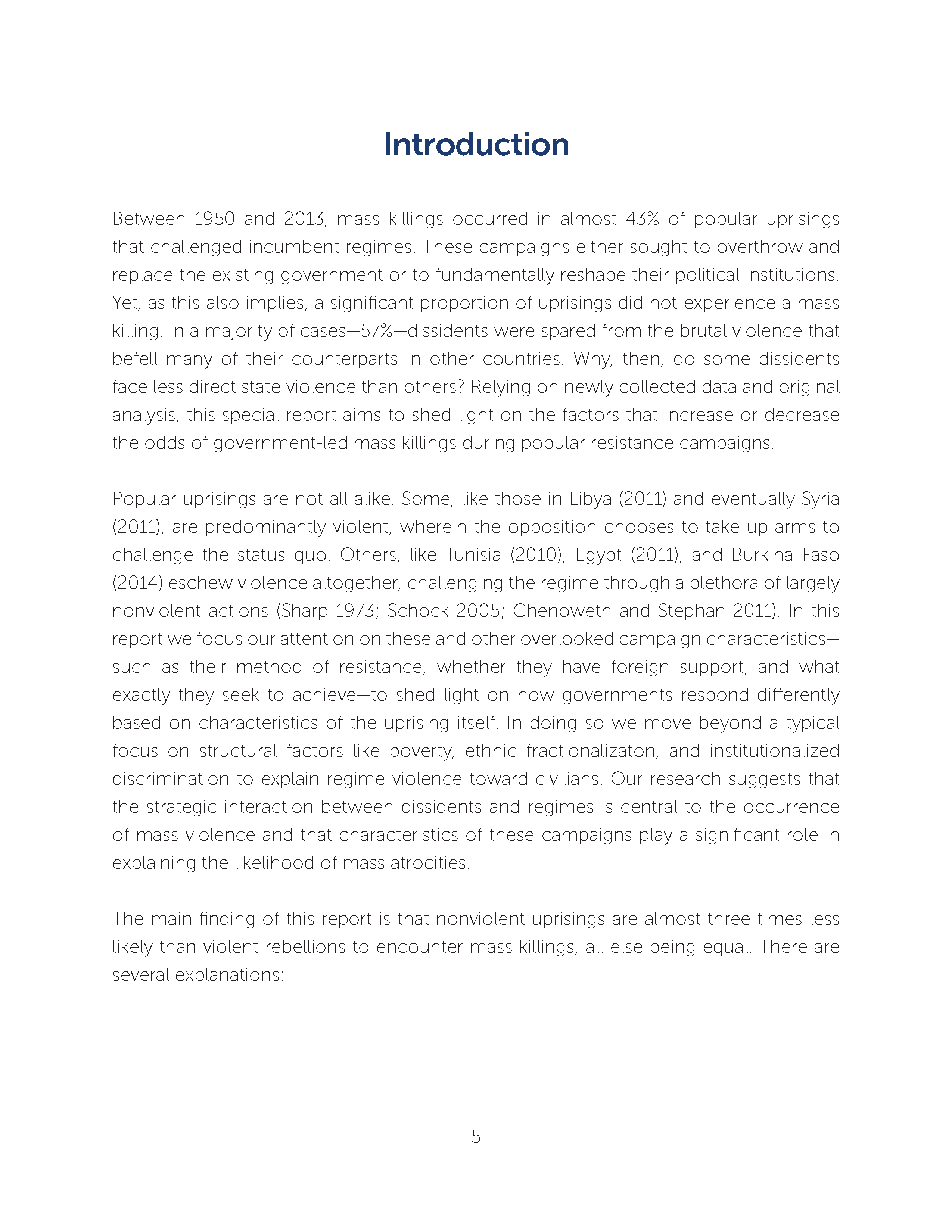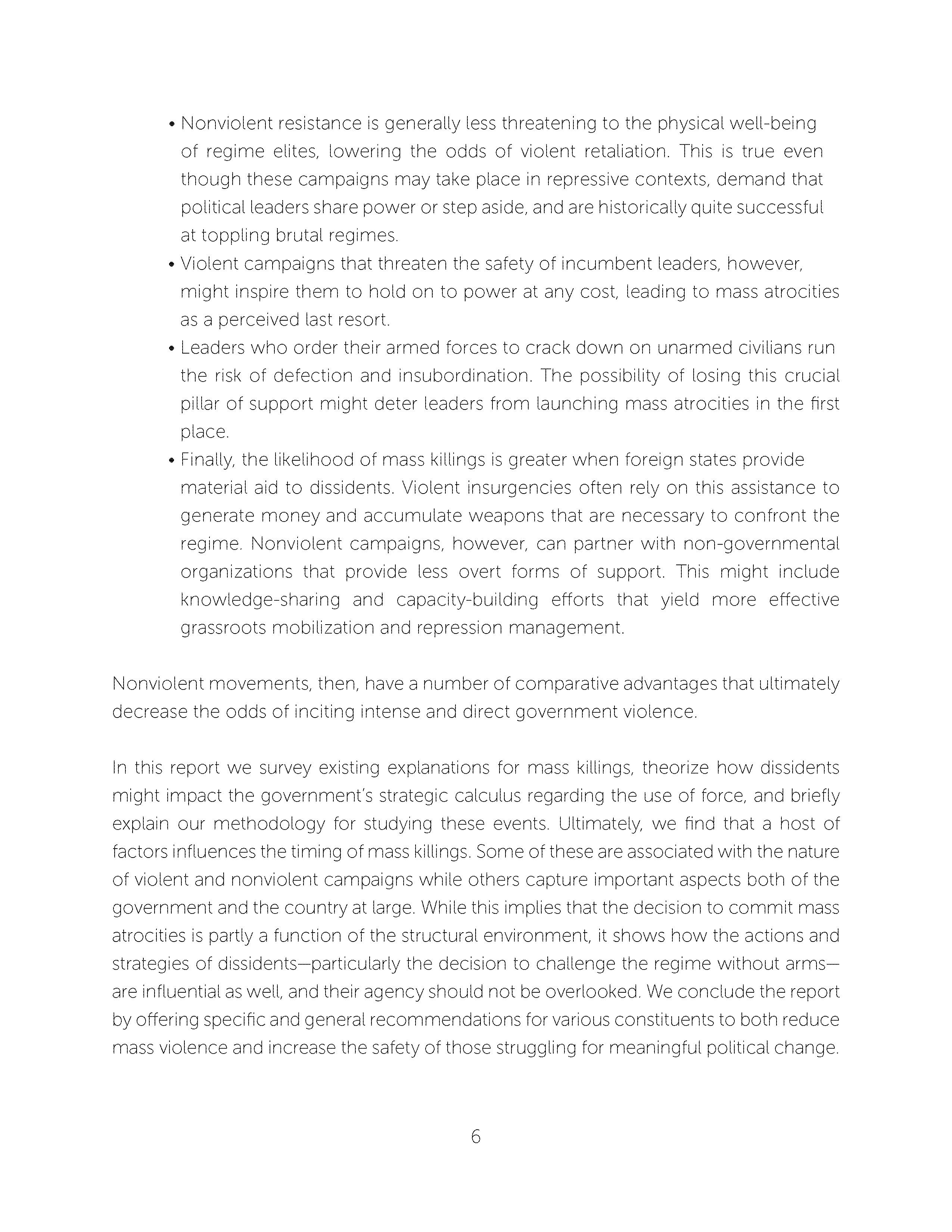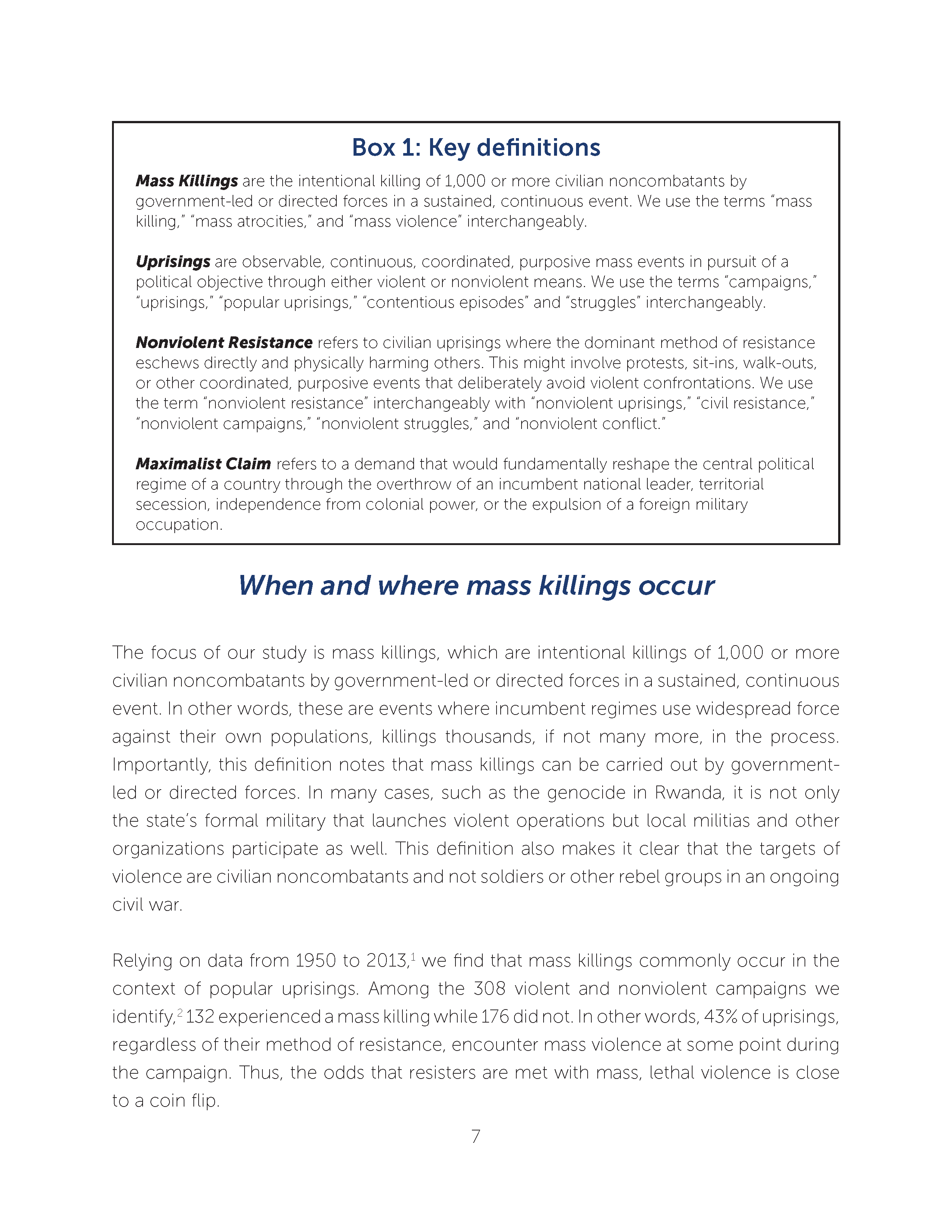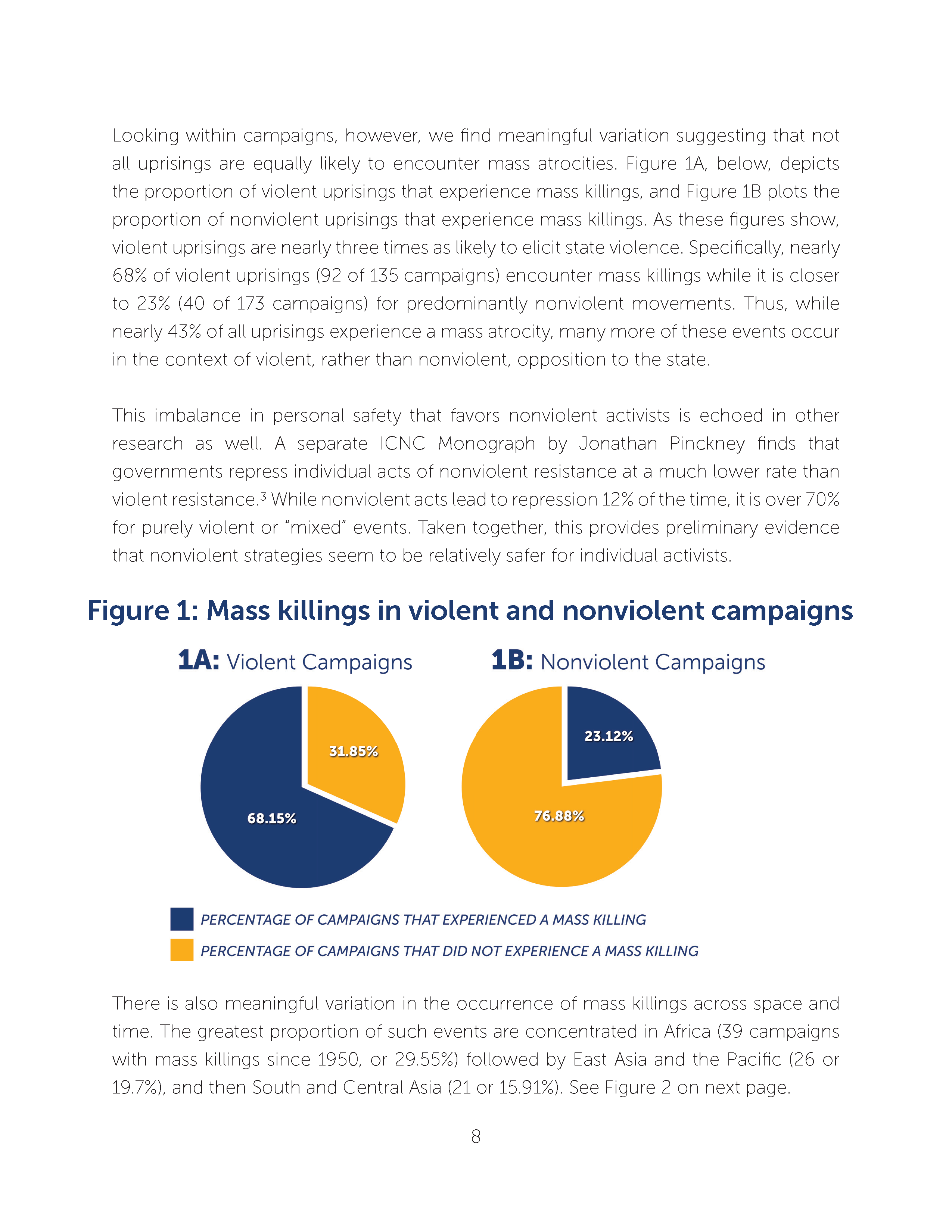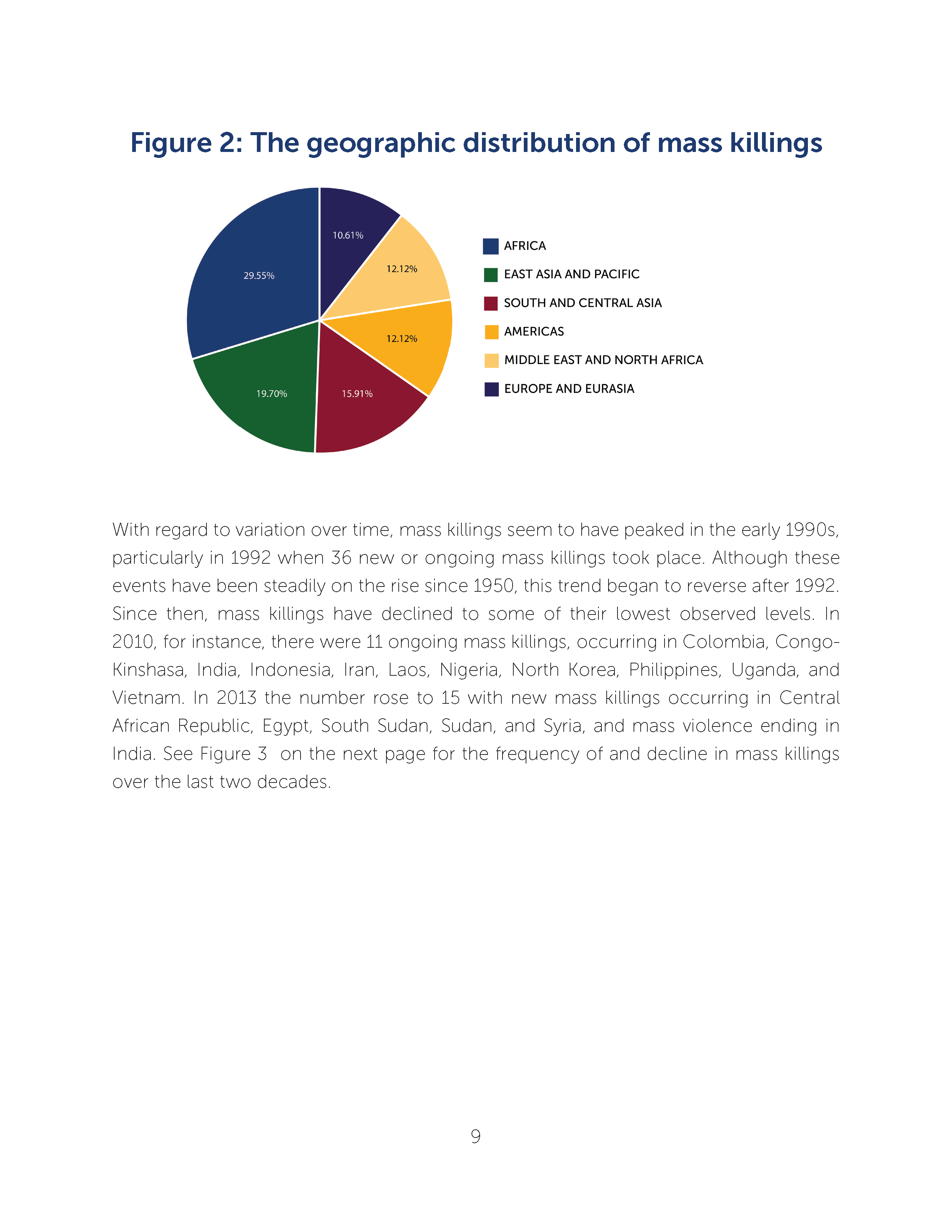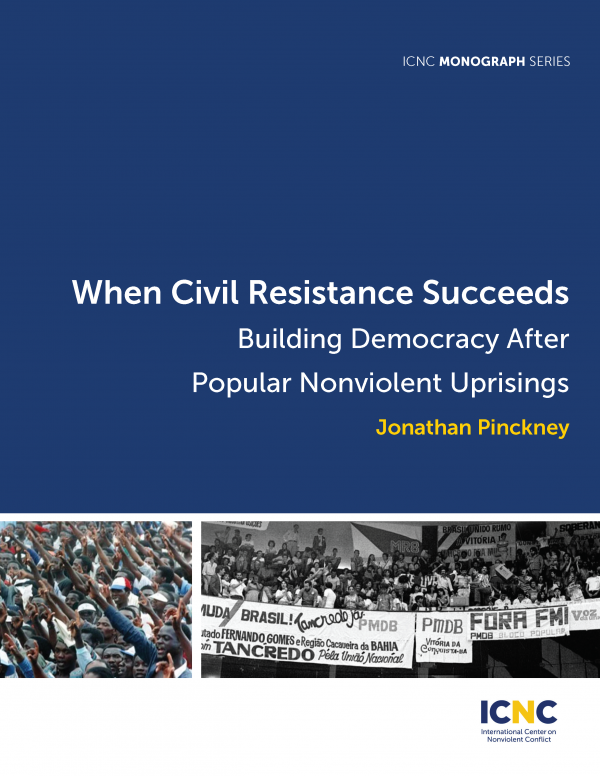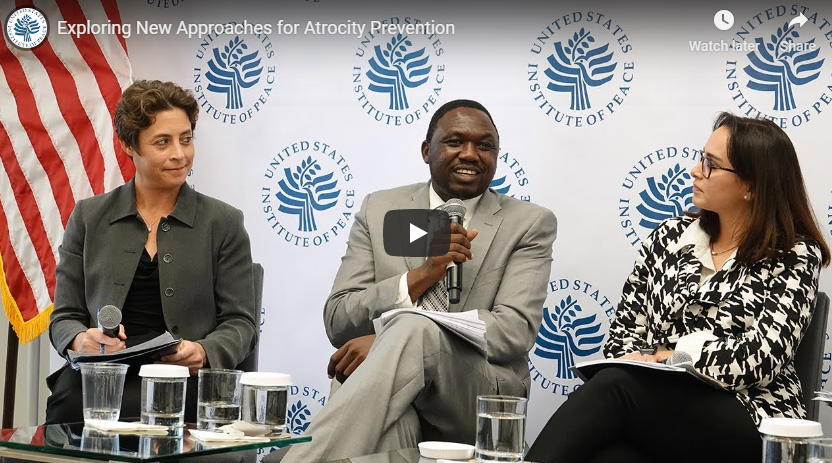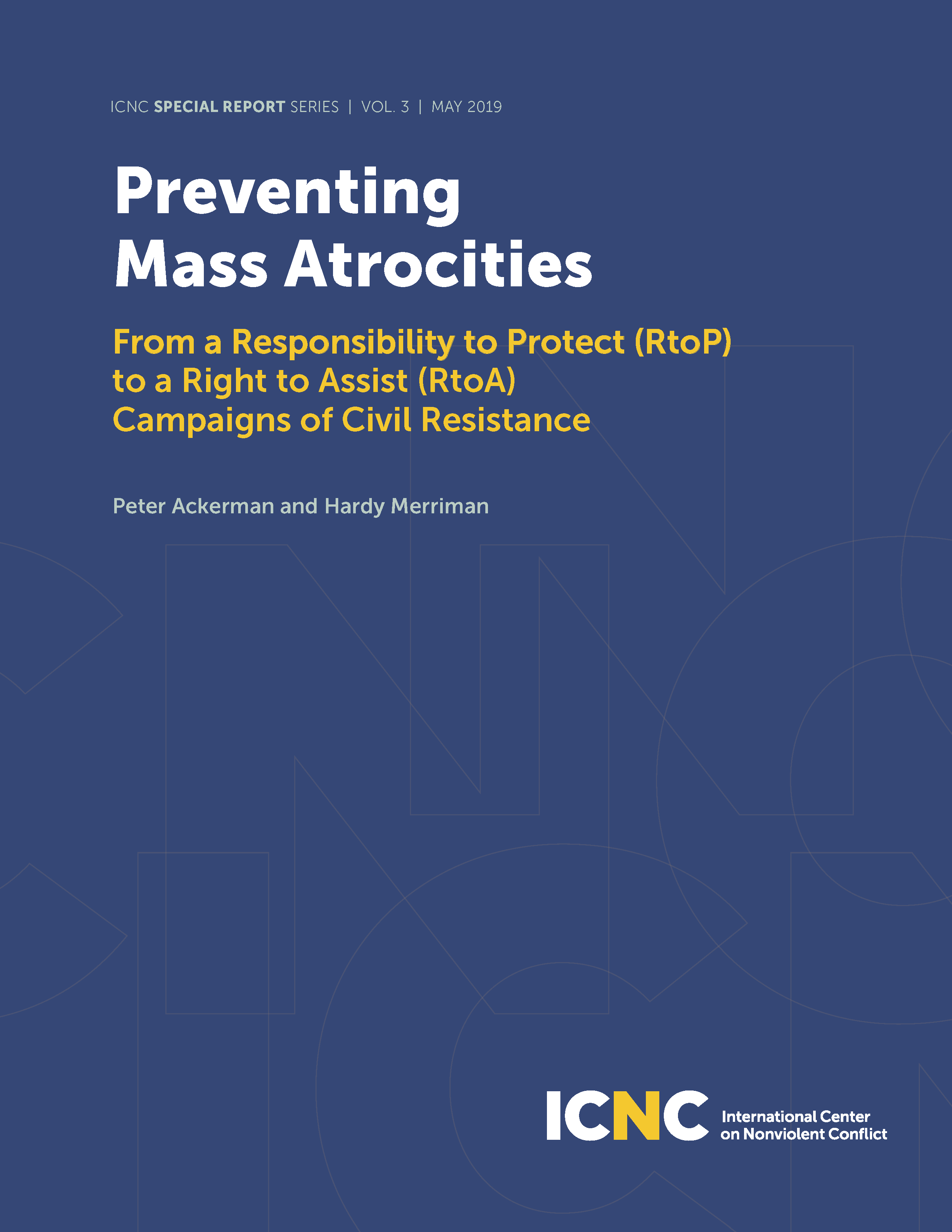Nonviolent Resistance and Prevention of Mass Killings During Popular Uprisings
In this report we survey existing explanations for mass killings, theorize how dissidents might impact the government’s strategic calculus regarding the use of force, and briefly explain our methodology for studying these events. Ultimately, we find that a host of factors influences the timing of mass killings. Some of these are associated with the nature of violent and nonviolent campaigns while others capture important aspects both of the government and the country at large. While this implies that the decision to commit mass atrocities is partly a function of the structural environment, it shows how the actions and strategies of dissidents—particularly the decision to challenge the regime without arms — are influential as well, and their agency should not be overlooked. We conclude the report by offering specific and general recommendations for various constituents to both reduce mass violence and increase the safety of those struggling for meaningful political change.
Published May 2018
Purchase a print copy
